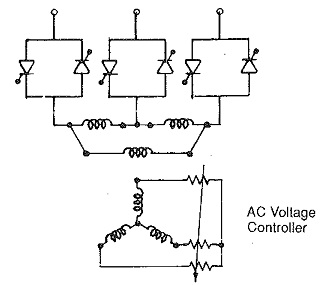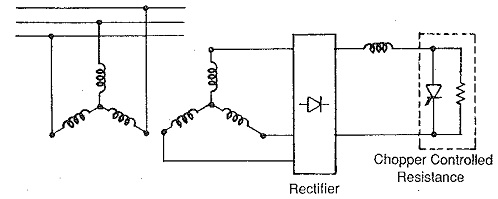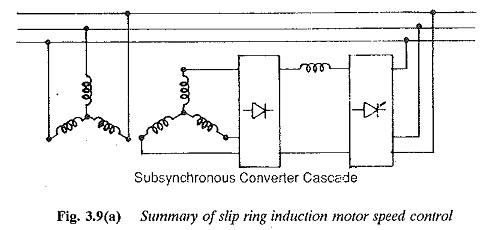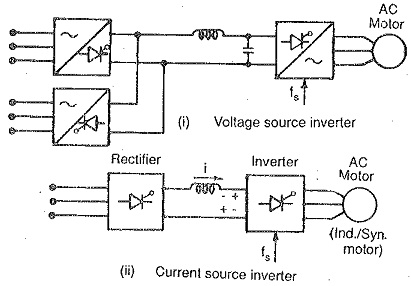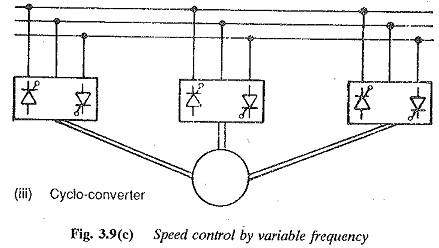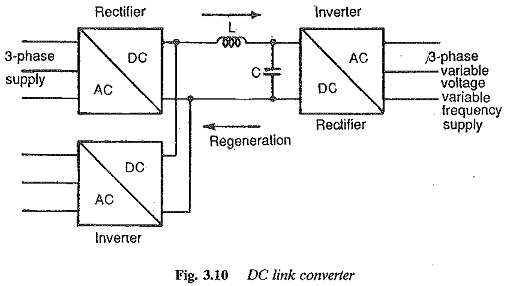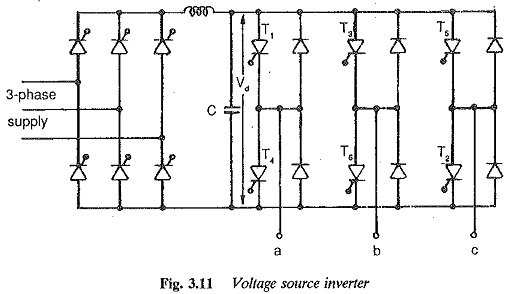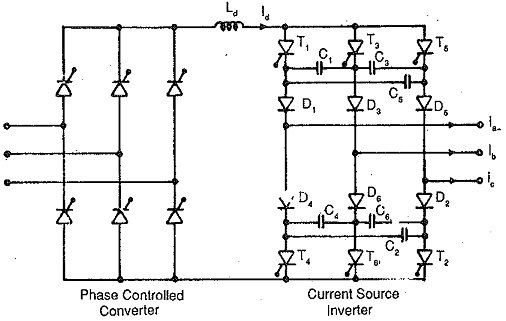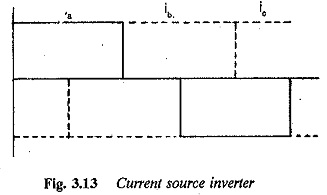Phase Controlled Line Commutated Converters:
In these Phase Controlled Line Commutated Converters, the commutation voltage, i.e. the voltage required to transfer current from one thyristor to the other, is provided by the supply lines to which the converter is connected. The classification of these Line Commutated Converters is done in several ways. Depending on the direction of power flow, i.e. the type of energy conversion performed, they may be one quadrant or two quadrant converters. As has already been explained, a two quadrant converter allows power in both directions, and can perform both phase controlled rectification and inversion, i.e. ac to dc as well as dc to ac.
The converter necessarily has thyristors in all positions and, is called a fully controlled converter. On the other hand, a one quadrant converter has a power flow from ac to dc and diodes can be used in a few positions of the converter. It can perform only phase controlled rectification, and is called a half controlled converter.
Line Commutated Converters are also classified according to the pulse number of the ac voltage superimposing the average dc voltage of the converter. Thus, we have
- Two pulse converters
- Three pulse converters
- Six pulse converters
- Twelve pulse converters
Converters can be Midpoint or bridge type converters depending upon their layout.
Two Quadrant Converter:
Phase controlled converters which perform both phase controlled rectification and inversion are two quadrant converters. They are used to convert ac to dc and vice versa, and have thyristors in all positions. These are further classified as midpoint converters and bridge type converters.
